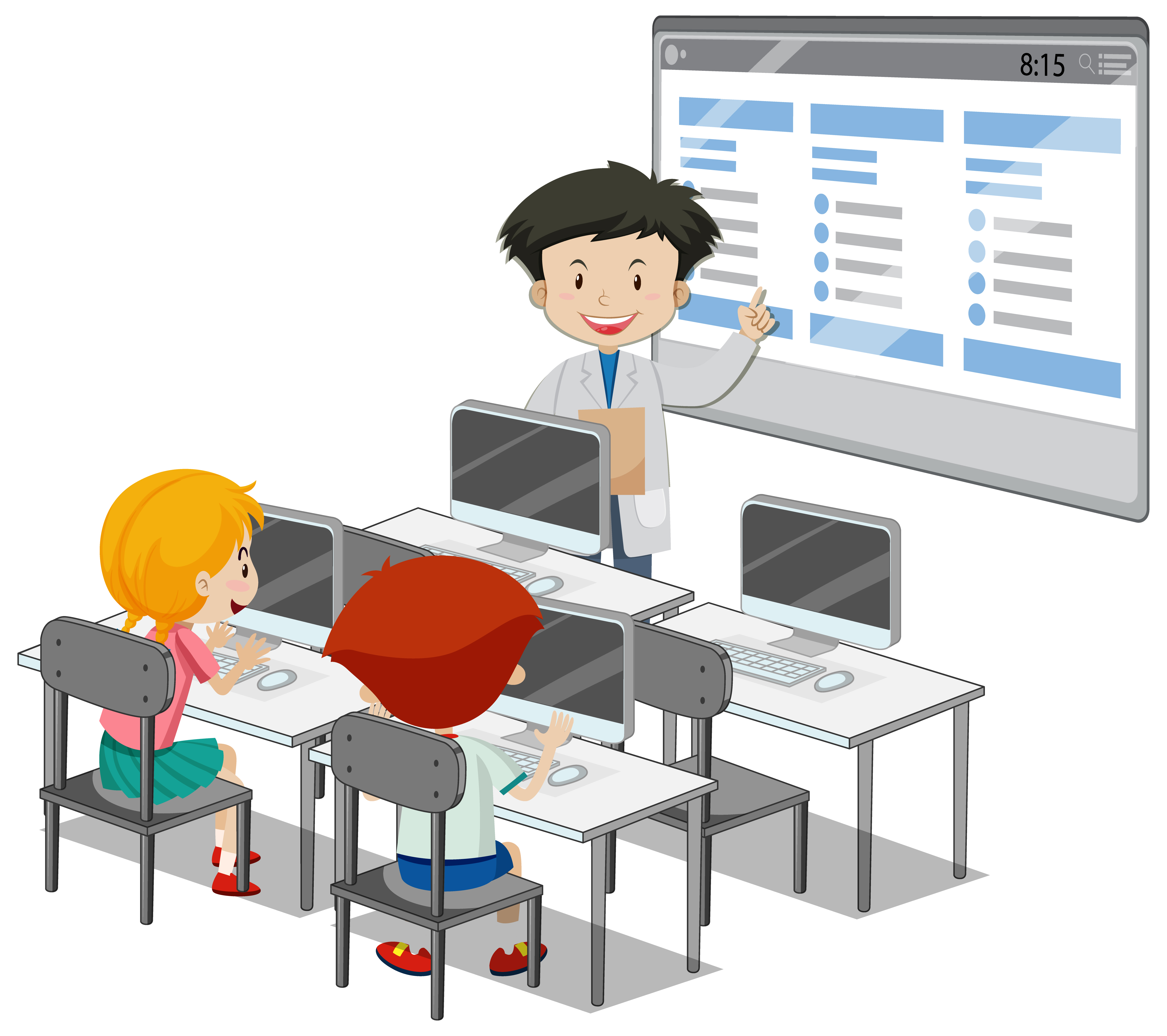Instructor Led Training
Starting out with Programming Logic & Design
Instructor-led training (ILT) is a traditional form of education that involves a skilled instructor leading a classroom or virtual session to deliver training to learners.
Limited seat available, enroll before date November 24, 2025.
why should buy instructor led course?
Investing in an instructor-led course offers several advantages that can greatly enhance your learning experience. One of the key benefits is the opportunity to receive expert guidance from seasoned professionals who possess extensive knowledge and expertise in the subject matter. These instructors can offer valuable insights, address your queries, and provide guidance tailored to your specific needs. Additionally, instructor-led courses follow a well-structured curriculum, ensuring a comprehensive learning journey that covers all the essential topics. This structured approach enables you to progress in a logical and organized manner, building a strong foundation of knowledge. Moreover, instructor-led courses often provide personalized feedback, allowing you to receive individualized assessments and guidance to improve your understanding and skills.
Professional Certificate.
Obtaining certification of completion is a significant benefit that comes with many instructor-led courses. This certification serves as formal recognition of your successful completion of the course and showcases your commitment to learning and professional development. It can be a valuable addition to your resume or portfolio, highlighting your expertise and dedication in a specific field or skill set. Certification demonstrates to employers, clients, or colleagues that you have acquired the necessary knowledge and skills to perform tasks effectively. It can enhance your credibility and open doors to new career opportunities or advancements. Moreover, certification provides a sense of accomplishment and satisfaction, validating the time and effort you invested in the course. Ultimately, the certification of completion offers tangible evidence of your commitment to continuous learning and professional growth, making it a worthwhile asset in today's competitive job market.
How Does It Work?


Zoom meeting with student twice a week.
As an educator, I have implemented a structured learning approach by conducting Zoom meetings with my students twice a week. This interactive platform has become an invaluable tool for fostering meaningful connections and facilitating engaging discussions in a virtual classroom setting.


AI Tutor support.
Mentoring support plays a crucial role in guiding individuals towards personal and professional growth. By offering mentorship, I provide a safe and supportive space for individuals to explore their goals, challenges, and aspirations.


Assignments and Grade.
Assignments and grading are essential components of the educational process, allowing students to demonstrate their understanding of concepts and skills while providing teachers with a means to assess their progress. Assignments are designed to reinforce learning, encourage critical thinking, and promote independent problem-solving.
About This Course
Explore programming essentials with our “Starting Out with Programming Logic & Design” course. This beginner programming course covers everything from the basics to advanced topics like object-oriented programming and GUI applications. With an emphasis on how to develop programming logic, you’ll engage in hands-on lab activities, debug & write your programs, and code languages such as Java, Python, and C++. Whether you're designing your first program or structuring complex algorithms, this hands-on programming logic course is designed to build your skills step-by-step, ensuring you develop a strong understanding of coding.
Skills You’ll Get
Hands-On Labs
34+ LiveLab | 9+ Video tutorials | 45+ Minutes
Video Lessons
35+ Videos | 04:16+ Hours
Lesson Plan
Preface
- Changes in the Fifth Edition
- Brief Overview of Each Lesson
- Organization of the Text
- Features of the Text
Introduction to Computers and Programming
- Introduction
- Hardware
- How Computers Store Data
- How a Program Works
- Types of Software
- Review Questions
Input, Processing, and Output
- Designing a Program
- Output, Input, and Variables
- Variable Assignment and Calculations
- Variable Declarations and Data Types
- Named Constants
- Hand Tracing a Program
- Documenting a Program
- Designing Your First Program
- Focus on Languages: Java, Python, and C++
- Review Questions
- Debugging Exercises
- Programming Exercises
Modules
- Introduction to Modules
- Defining and Calling a Module
- Local Variables
- Passing Arguments to Modules
- Global Variables and Global Constants
- Focus on Languages: Java, Python, and C++
- Review Questions
- Debugging Exercises
- Programming Exercises
Decision Structures and Boolean Logic
- Introduction to Decision Structures
- Dual Alternative Decision Structures
- Comparing Strings
- Nested Decision Structures
- The Case Structure
- Logical Operators
- Boolean Variables
- Focus on Languages: Java, Python, and C++
- Review Questions
- Debugging Exercises
- Programming Exercises
Repetition Structures
- Introduction to Repetition Structures
- Condition-Controlled Loops: While, Do-While, and Do-Until
- Count-Controlled Loops and the For Statement
- Calculating a Running Total
- Sentinels
- Nested Loops
- Focus on Languages: Java, Python, and C++
- Review Questions
- Debugging Exercises
- Programming Exercises
Functions
- Introduction to Functions: Generating Random Numbers
- Writing Your Own Functions
- More Library Functions
- Focus on Languages: Java, Python, and C++
- Review Questions
- Debugging Exercises
- Programming Exercises
Input Validation
- Garbage In, Garbage Out
- The Input Validation Loop
- Defensive Programming
- Focus on Languages: Java, Python, and C++
- Review Questions
- Debugging Exercises
- Programming Exercises
Arrays
- Array Basics
- Sequentially Searching an Array
- Processing the Contents of an Array
- Parallel Arrays
- Two-Dimensional Arrays
- Arrays of Three or More Dimensions
- Focus on Languages: Java, Python, and C++
- Review Questions
- Debugging Exercises
- Programming Exercises
Sorting and Searching Arrays
- The Bubble Sort Algorithm
- The Selection Sort Algorithm
- The Insertion Sort Algorithm
- The Binary Search Algorithm
- Review Questions
- Debugging Exercise
- Programming Exercises
Files
- Introduction to File Input and Output
- Using Loops to Process Files
- Using Files and Arrays
- Processing Records
- Control Break Logic
- Focus on Languages: Java, Python, and C++
- Review Questions
- Debugging Exercises
- Programming Exercises
Menu-Driven Programs
- Introduction to Menu-Driven Programs
- Modularizing a Menu-Driven Program
- Using a Loop to Repeat the Menu
- Multiple-Level Menus
- Focus on Languages: Java, Python, and C++
- Review Questions
Text Processing
- Introduction
- Character-by-Character Text Processing
- Focus on Languages: Java, Python, and C++
- Review Questions
- Debugging Exercises
- Programming Exercises
Recursion
- Introduction to Recursion
- Problem Solving with Recursion
- Examples of Recursive Algorithms
- Focus on Languages: Java, Python, and C++
- Review Questions
- Programming Exercises
Object-Oriented Programming
- Procedural and Object-Oriented Programming
- Classes
- Using the Unified Modeling Language to Design Classes
- Finding the Classes and Their Responsibilities in a Problem
- Inheritance
- Polymorphism
- Focus on Languages: Java, Python, and C++
- Review Questions
- Programming Exercises
GUI Applications and Event-Driven Programming
- Graphical User Interfaces
- Designing the User Interface for a GUI Program
- Writing Event Handlers
- Designing Apps For Mobile Devices
- Focus on Languages: Java, Python, and C++
- Review Questions
- Programming Exercises
Appendix A: ASCII/Unicode Characters
Appendix B: Flowchart Symbols
Appendix C: Pseudocode Reference
Appendix D: Converting Decimal Numbers to Binary
Frequently asked questions
Ready to get started?

